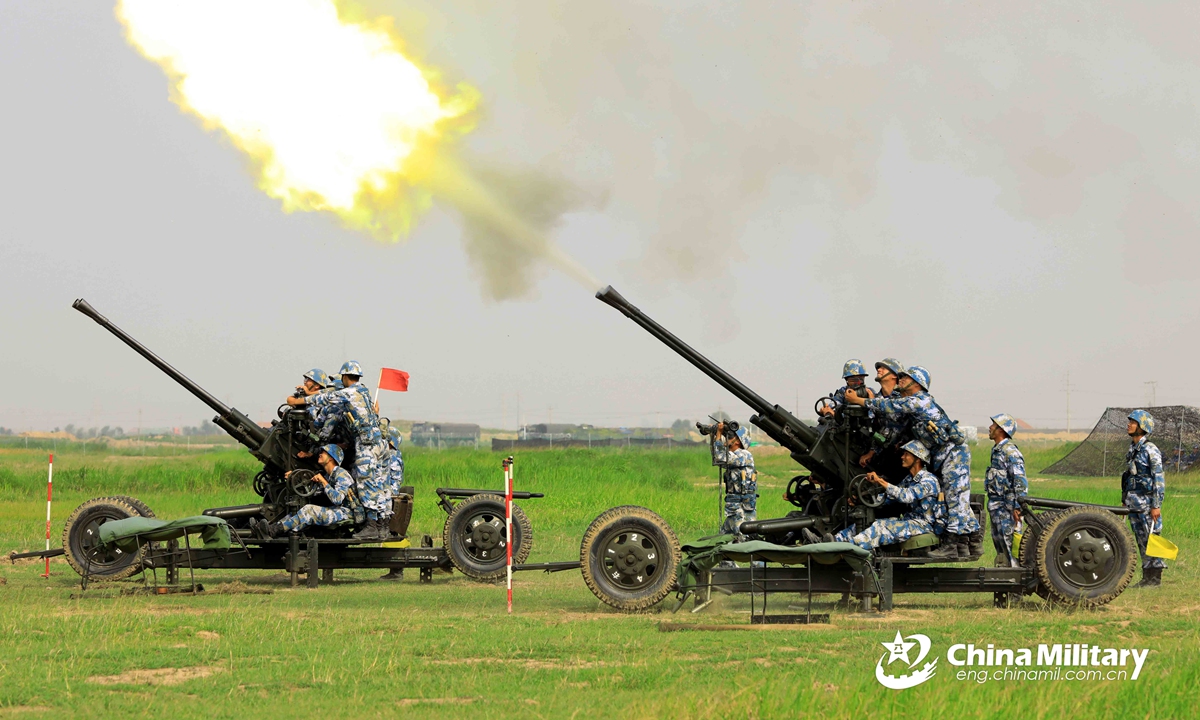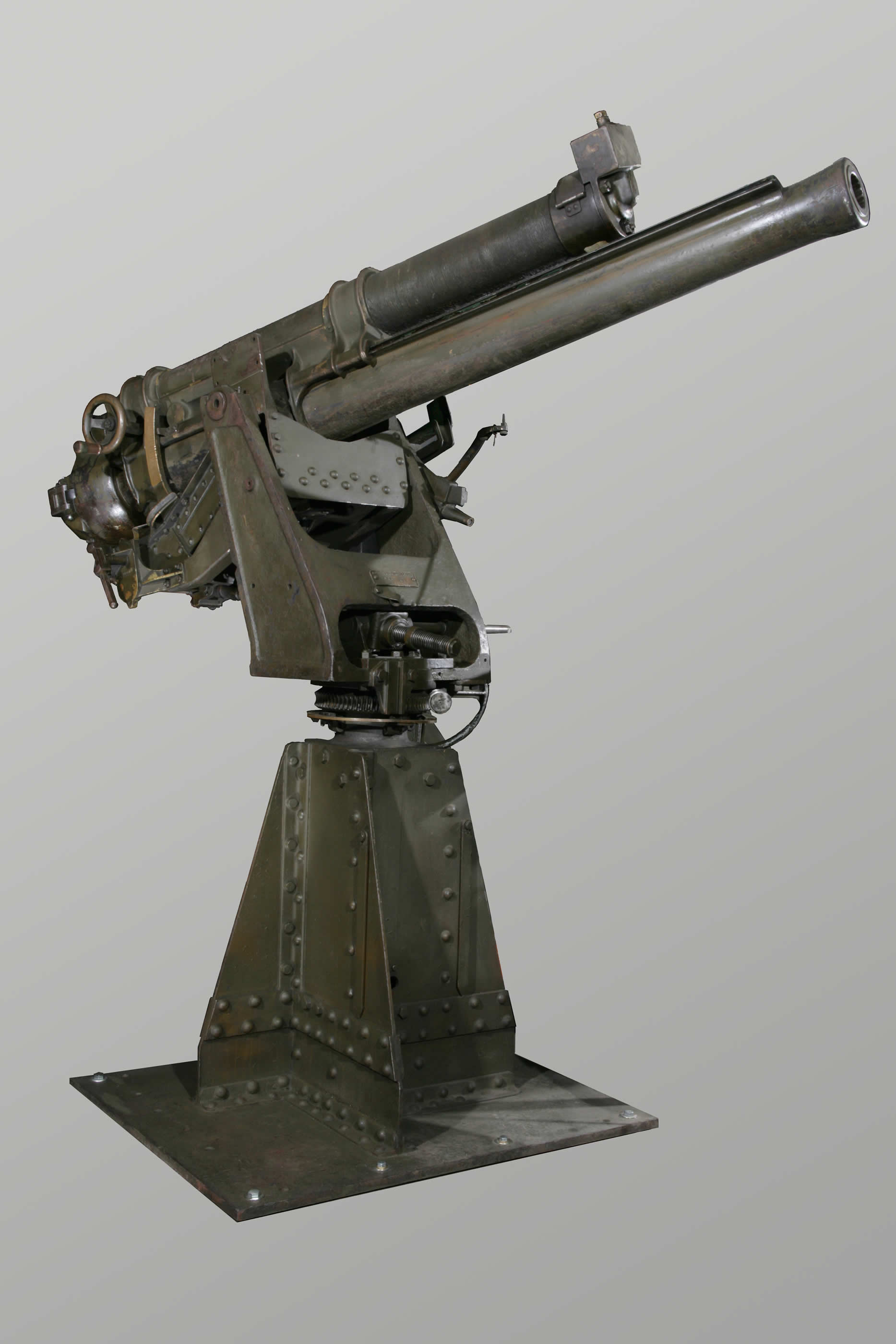Anti Aircraft Gun - This light anti-aircraft gun called Bofors was developed in Sweden and received Adopted from many countries. The United States used the M1 in World War II. It was designed to be launched with the wheels raised, the trolley lowered to the ground, and the outriggers deployed for stability.
Bofors was the standard anti-aircraft gun system for the Allies during World War II. After the war, many countries bought weapon systems for their air defense networks. At its peak, Bofors was exported and allowed to operate nearly 100 times around the world. It is still served in many states today.
Anti Aircraft Gun

Developed in Sweden, the Bofors was converted into a semi-mobile air defense weapon. The initial production unit can shoot at a range of 23,000 feet, the upgraded version can shoot up to 41,000 feet. The initial production version fired at a rate of 120 rounds per minute, while the improved version exceeded 300 rounds per minute.
Soviet 85 Mm. Anti Aircraft Gun 52 K With Crew 1/72
At the end of and after World War II, the Bofors design was licensed by both the United States and Britain. More than 25 types have been produced, including more than 150,000 units. No less than 60,000 liters / 60 variants were produced before the war ended in 1945.
Today, Bofors is still used in various countries around the world, including the United States. Recently, the AC-130U "Spooky II" 40 mm. Bofors began to be fitted to AC-130s in 1970 with the first production AC-130A. The AC-130U was the last version of the fighter to use the Bofors, and later versions would use the 30mm GAU-23 cannon instead. Artillery Crew (1943).
Anti-aircraft warfare or anti-aircraft forces or air defense forces is a battlefield response to air warfare, defined by NATO as "all measures designed to deny or reduce the effectiveness of hostile actions".
This includes surface and subsurface weapons systems (launched submarines), air weapons systems, related ssor systems, command and control management, and passive measures (such as barrage balloons). It can be used to protect the navy, land and air anywhere. However, for most countries, the main effort is often to conquer the village. NATO refers to air defense as air defense and naval air defense as combat. Anti-aircraft battle. Missile defense is an extension of air defense, as well as an initiative to adjust air barriers to intercept any missile in flight.
Artillerymen Fire Anti Aircraft Gun System
In some countries, such as England and Germany during the Second World War, the Soviet Union, modern NATO and the United States, air defense aircraft and air defense aircraft are now under integrated command and control. However, while air defense may generally be homeland defense (including military installations), forces in the field, wherever they are, provide their own defense against air threats.
Until the 1950s, cannons firing bullets from 7.62 mm (.30 in) to 152.4 mm (6 in) were standard weapons; Guided missiles have become more common, except at very short ranges (as in close-range weapon systems, typically using rotating automatic cannons or, in more recent systems, adaptations of short-range air-to-air missiles, often integrated into a single system with rotary guns).
It is possible that the term "Air Defence" was first used by the British, as the Air Defects of Great Britain (ADGB) was formed as an RAF command in 1925 [Evidence from the WW1 RPPC shows that the term Air Defces was used in 1916. The reverse of a WW1 post bears the words "Sergeants No. 1 Anti-Aircraft Coy London Air Defces (S.W) Feb 20/ 1916". However, in England the command is also called "Anti-Aircraft", abbreviated as. AA, a term that remained in use until the 1950s. After World War I, it was sometimes prefixed with "light" or "heavy" (LAA or HAA) to designate the type of gun or unit. Nicknames for anti-aircraft guns include: "AA", "AAA" or "triple-A" (abbreviation for "anti-aircraft artillery"), flak (from German), "ack-ack" (from the English spelling used for the sound of "AA.");

And "Archie" (a British World War I era that may have been created by Amyas Borton, believed to be from the Royal Flying Corps, from George Robey's music hall performer, "Archibald, of course not!"
Inch Anti Aircraft Gun M3
NATO defines anti-aircraft warfare as "actions taken to destroy naval forces against attack by air weapons fired from aircraft, ships, submarines, and land positions."
In some militaries, the term All-Arms Air Defect (AAAD) is used for air defense by non-specialized forces. Other terms in the late 20th century include "Ground Air Defense System" (GBAD) with the related terms "Short Range Air Defense" (SHORAD) and Mobile Air Defense System (MANPADS). Anti-aircraft missiles are called surface-to-air missiles, abbreviated and pronounced "SAM" and surface-to-air guided weapons (SAGW). Examples are RIM-66 Standard, Raytheon Standard Missile 6, or MBDA Aster.
It is also referred to as Flugabwehrkanone), whce glish 'flak', and the Russian word Protivovozdushnaya oborona (Cyrillic: Противовозду́шная оборо́на), literal translation of "air resistance", abbreviated as PVO.
In Russia, AA systems are called zitnye (ie "point to zith") systems (guns, missiles, etc.). In Frch, air defce is called defce DCA (Défse contre les aéronefs, aéronef is a general term for all types of air threats (aircraft, blimp, zeppelin, missiles, missiles).
Germany Will Deliver Anti Aircraft Tanks To Ukraine
The maximum distance that a gun or missile can target an aircraft is a significant number. However, many different definitions are used but unless the same definition is used, it is not possible to compare the performance of guns or missiles. For the AA gun, only the ascending part of the trajectory can be usefully used. One range is "ceiling", the maximum ceiling is the height that the projectile can reach if fired vertically, not the performance in itself, because few AA guns can fire vertically, the maximum duration of the fuze may be very short, but it is especially useful. Benchmark to compare different weapons.
The British adopted an "effective ceiling", that is the height at which a gun can fire multiple rounds at a moving target; This can be limited by the maximum operating time of the fuse as well as the capacity of the gun. In the late 1930s, the British definition was "the height at which a target approaching straight at 400 mph [640 km/h] can be identified for 20 seconds before the gun reaches 70°".
The essence of air deficit is to check and destroy enemy aircraft. The main problem is to hit a moving target in 3D space; The attack must not only match these three coordinates, but must be done at the same time when the target is in that position. This means that the projectile must be directed at the target or directed towards the expected point of the target when the projectile hits, taking into account the speed and direction of both the target and the projectile.

Throughout the 20th century, air defense was one of the fastest growing areas of military technology, responding to the evolution of aircraft and the development of technologies such as radar, guided missiles, and computers (initially analog electronic computers from the 1930s onwards, as well as equipment. Described below). Improvements have been made to ssors, technical fire control, weapons, and command and control. At the beginning of the 20th century, these were either primitive or non-existent.
Serbia Tests Pasars 40mm Self Propelled Anti Aircraft Gun
But soon it was replaced by radar, which, in turn, was replaced by optoelectronics in the 80s. Command and control remained primitive until the late 1930s, when the British established a unified system.
For the ADGB linked ground air defense with the British Army's Anti-Aircraft Command, although air defense in the field was based on less complex arrangements. NATO later called these arrangements "ground-based air defense", which was defined as "a network of ground-based radar sites and command and control centers within a designated theater for tactical air control operations".
The rules of Gagemt are important to prevent air defects in sharp or neutral aircraft. Their use is aided but not controlled by electronics that were originally introduced during World War II. While these rules originate from the supreme authority, differential rules can be applied to different types of air obstacles that cover the same area at the same time. AAAD usually operates under very strict rules.
Until the 1950s, rocket-propelled grenades were the standard weapon. Digitally guided missiles have become dominant, except at their shortest ranges. However, the type of missile or warhead and its fuse, and with the guidance system of the missile, is and still is diverse. The goal is not always easy to break; However, the damaged aircraft may be forced to cancel their mission, and if they manage to overnight and land in dry territory, they may be out of action for several days or permanently. Ignoring small arms and smaller machine guns, low-caliber ground guns range from 20 mm to at least 152 mm.
Bachmann Europe Plc
NATO defines passive air defense as "passive measures taken for the physical protection of personnel, installations, equipment and supplies to reduce the effectiveness of air and/or missile attacks."
It remains an important activity for ground forces and involves concealment and concealment to avoid detection.
90 mm anti aircraft gun, anti aircraft gun range, bofors anti aircraft gun, russian anti aircraft gun, 3 inch anti aircraft gun, lego anti aircraft gun, nerf anti aircraft gun, anti aircraft gun games, unsc rockethog vs anti aircraft gun, halo mega bloks anti aircraft gun, buy anti aircraft gun, lego ww2 anti aircraft gun
0 Comments